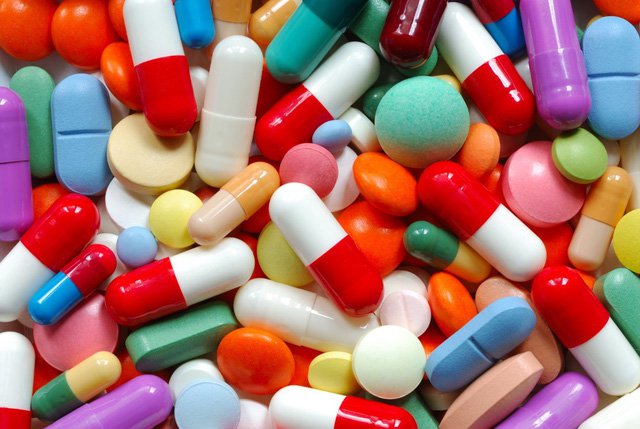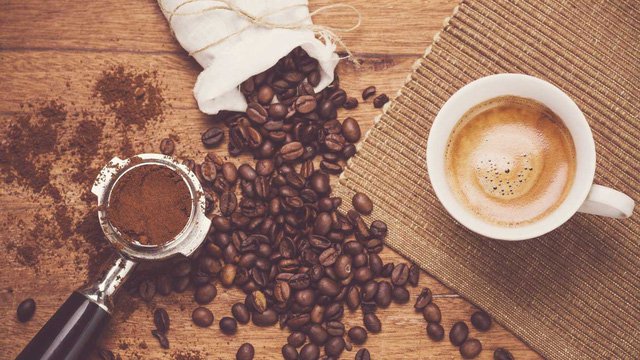Recognizing and treating fibrocystic breast disease
The article was professionally consulted by Specialist Doctor I Le Hong Lien - Department of Obstetrics and Gynecology - Vinmec Central Park International General Hospital.
Fibrocystitis is a benign condition that causes the breasts to have many lumps along with pain. The main cause is hormone disorders in middle-aged women. So what is fibrocystic breast disease and how is it treated?
1. How to recognize fibrocystic mastitis is what?
1.1. Breast pain Clinically, women with fibrocystic mastitis often go to the doctor when they have symptoms of breast pain with typical features such as:
cyclical appearance, specifically about 8 days before menstruation, during menstruation. menstrual period, and disappear after menstruation; Especially common in pre-menopausal women; Pain in one or both breasts may be present, usually in the upper outer breast and spreading to the arms; There are cases of mild pain 1 week before menstruation, less pain during menstruation; Or sometimes the pain persists for a month, getting closer to the date of the period, the intensity increases due to hormonal changes, and the pain is less when menstruating. Accompanying the pain is tightness in both breasts, severe pain can make the patient not dare to touch the breast or wear a bra. 1.2. Fibroids In addition to breast pain, patients also feel breast lumps or uneven lumps in their breasts. The good news is that oncologists now consider that the tumors of fibrocystic breast disease are quite benign. Cysts when palpated will detect the following characteristics:
Location: Appearing in 1 or both breasts, located in the upper outer and lower quarter of the breast. Shape: The tumor is round, slightly firm, and well-defined. For hard and painful patches on the breast, the limit is unknown, disappearing after menstruation. Characteristics: Most are movable, but sometimes tumors are easily fixed in one place if there is a lot of fibrous tissue. Size: Tends to fluctuate in size during the month. Specifically, cystic fibrosis often enlarges and hurts more than 1 week before menstruation. Pain level: Fibroids feel tight and painful when palpated. Sometimes patients can also experience pain under the arm, even limiting hand movement. 1.3. Other symptoms Women with fibrocystic breast disease have other symptoms such as swelling, breast tenderness and thickening of breast tissue. In addition, in some cases, there will be dark brown discharge in the nipple. Women need to see a doctor immediately if they notice a clear, red or bloody discharge from the nipple as this can be a warning sign of breast cancer and should not be ignored or ignored.
cyclical appearance, specifically about 8 days before menstruation, during menstruation. menstrual period, and disappear after menstruation; Especially common in pre-menopausal women; Pain in one or both breasts may be present, usually in the upper outer breast and spreading to the arms; There are cases of mild pain 1 week before menstruation, less pain during menstruation; Or sometimes the pain persists for a month, getting closer to the date of the period, the intensity increases due to hormonal changes, and the pain is less when menstruating. Accompanying the pain is tightness in both breasts, severe pain can make the patient not dare to touch the breast or wear a bra. 1.2. Fibroids In addition to breast pain, patients also feel breast lumps or uneven lumps in their breasts. The good news is that oncologists now consider that the tumors of fibrocystic breast disease are quite benign. Cysts when palpated will detect the following characteristics:
Location: Appearing in 1 or both breasts, located in the upper outer and lower quarter of the breast. Shape: The tumor is round, slightly firm, and well-defined. For hard and painful patches on the breast, the limit is unknown, disappearing after menstruation. Characteristics: Most are movable, but sometimes tumors are easily fixed in one place if there is a lot of fibrous tissue. Size: Tends to fluctuate in size during the month. Specifically, cystic fibrosis often enlarges and hurts more than 1 week before menstruation. Pain level: Fibroids feel tight and painful when palpated. Sometimes patients can also experience pain under the arm, even limiting hand movement. 1.3. Other symptoms Women with fibrocystic breast disease have other symptoms such as swelling, breast tenderness and thickening of breast tissue. In addition, in some cases, there will be dark brown discharge in the nipple. Women need to see a doctor immediately if they notice a clear, red or bloody discharge from the nipple as this can be a warning sign of breast cancer and should not be ignored or ignored.

Đau vú là một trong những triệu chứng của viêm xơ tuyến vú
2. Diagnosis of fibrocystic breast disease
Fibrocystic mammary gland disease is caused by the proliferation of mammary glands and ducts, combined with stromal fibrosis, thus can increase the risk of breast cancer. However, women do not need to worry too much, instead should go to the doctor if there are symptoms of the disease. Doctors will conduct a number of tests to confirm the diagnosis as well as differentiate it from other related diseases. Specifically:
Breast examination to diagnose fibroadenoma. Breast ultrasound : A simple, economical form, can help detect the location, number, size and fibrous proliferation of mammary gland tumors, as well as distinguish normal from abnormal breast tissue. Fine needle aspiration cytology (FNA): Cyst aspiration and cytology are useful for early cancer screening. The results of blood puncture, combined with a biopsy, suggest cancer, so surgery should be done soon. If the cytology is normal, the patient should be followed up every 6 months. Breast biopsy: Your doctor may also recommend a caesarean section if you have concerns about cancer during FNA aspiration. If cytology or dysplasia is detected, surgery is required. Mammography (Digital Mammography - Mammography): Needed to detect breast cancer early through signs of retraction or microcalcification. Resonance Imaging: To clearly identify changes in the breast in women with cystic fibrosis, allowing for a more accurate diagnosis.
Breast examination to diagnose fibroadenoma. Breast ultrasound : A simple, economical form, can help detect the location, number, size and fibrous proliferation of mammary gland tumors, as well as distinguish normal from abnormal breast tissue. Fine needle aspiration cytology (FNA): Cyst aspiration and cytology are useful for early cancer screening. The results of blood puncture, combined with a biopsy, suggest cancer, so surgery should be done soon. If the cytology is normal, the patient should be followed up every 6 months. Breast biopsy: Your doctor may also recommend a caesarean section if you have concerns about cancer during FNA aspiration. If cytology or dysplasia is detected, surgery is required. Mammography (Digital Mammography - Mammography): Needed to detect breast cancer early through signs of retraction or microcalcification. Resonance Imaging: To clearly identify changes in the breast in women with cystic fibrosis, allowing for a more accurate diagnosis.
3. Fibromyalgia and its treatment

Việc điều trị hiện nay chủ yếu chỉ theo dõi và dùng thuốc
Although cystic fibrosis is a benign disease, it can still be treated if a lump is detected after a mammogram and the patient feels uncomfortable. Depending on the case, the doctor will prescribe medical treatment or invasive surgery. Medicines commonly used to treat the disease include:
Prolactin inhibitors such as bromocriptin; Hormone that inhibits estrogen requires a doctor's prescription such as danazol; tamoxifen has anti-estrogen and progesterone effects in topical, topical or oral forms; over-the-counter pain relievers such as ibuprofen (Advil) and acetaminophen (Tylenol); Supplementation of Vitamin E. Current treatment is mainly monitoring and medication, requiring surgery when:
Enlarged and fast-growing cysts make the breasts tight; Superinfected breast cysts leading to abscesses; Laboratory results suggest that the tumor cells are malignant. It is important for fibrocystic mastitis and its treatment that the patient should be followed up once a year. In which, an examination and mammogram are required to see if the cyst situation has progressed further or not so that there can be timely medical interventions.
Prolactin inhibitors such as bromocriptin; Hormone that inhibits estrogen requires a doctor's prescription such as danazol; tamoxifen has anti-estrogen and progesterone effects in topical, topical or oral forms; over-the-counter pain relievers such as ibuprofen (Advil) and acetaminophen (Tylenol); Supplementation of Vitamin E. Current treatment is mainly monitoring and medication, requiring surgery when:
Enlarged and fast-growing cysts make the breasts tight; Superinfected breast cysts leading to abscesses; Laboratory results suggest that the tumor cells are malignant. It is important for fibrocystic mastitis and its treatment that the patient should be followed up once a year. In which, an examination and mammogram are required to see if the cyst situation has progressed further or not so that there can be timely medical interventions.
4. How to prevent fibrocystic mastitis is what?
4.1. Lifestyle Most women with fibrocystic mastitis do not need invasive treatment, but can relieve symptoms of pain and discomfort at home. When the results of fibrocystic mastitis are confirmed, the patient should not be too worried or bewildered because it easily makes the disease condition as well as the pain worse. To relieve pain and discomfort in the breast, the patient should:
Keep the mind relaxed and happy; Balance work and rest time reasonably; Apply a warm towel or cold compress when sore or tight. Choose the right bra, not tight or thickly padded; Try wearing a supportive bra that fits the swollen breast; Do not wear a bra at home and at night. 4.2. Diet Doctor's advice around fibrocystic breast disease and treatment also involves building a healthy menu. To reduce water retention as well as symptoms of chest pain, women should maintain a balanced and scientific diet by:
Consuming a lot of foods rich in B vitamins, potassium, magnesium such as: brown rice, fruits. , and vegetables. Avoid foods high in salt and unhealthy fats; Take essential fatty acid supplements; Limit the absorption of stimulants and caffeine such as alcohol, beer, coffee and tobacco.
Keep the mind relaxed and happy; Balance work and rest time reasonably; Apply a warm towel or cold compress when sore or tight. Choose the right bra, not tight or thickly padded; Try wearing a supportive bra that fits the swollen breast; Do not wear a bra at home and at night. 4.2. Diet Doctor's advice around fibrocystic breast disease and treatment also involves building a healthy menu. To reduce water retention as well as symptoms of chest pain, women should maintain a balanced and scientific diet by:
Consuming a lot of foods rich in B vitamins, potassium, magnesium such as: brown rice, fruits. , and vegetables. Avoid foods high in salt and unhealthy fats; Take essential fatty acid supplements; Limit the absorption of stimulants and caffeine such as alcohol, beer, coffee and tobacco.

Hạn chế hấp thụ cà phê
Periodic examination and absolute compliance with the doctor's treatment indications are important factors when treating fibrocystic breast disease. Women should not apply oral, unproven medically proven ways to reduce pain and swelling of breasts to avoid endangering health and life. The phenomenon of thin milk secretion in older women is normal and will gradually go away, but if it contains blood, the patient needs to see a doctor immediately. In fact, fibrocystic breast disease and its treatment only require long-term follow-up with an obstetrician, so there is nothing to worry about affecting quality of life.
Để đặt lịch khám tại viện, Quý khách vui lòng bấm số HOTLINE hoặc đặt lịch trực tiếp TẠI ĐÂY. Tải và đặt lịch khám tự động trên ứng dụng MyVinmec để quản lý, theo dõi lịch và đặt hẹn mọi lúc mọi nơi ngay trên ứng dụng.






